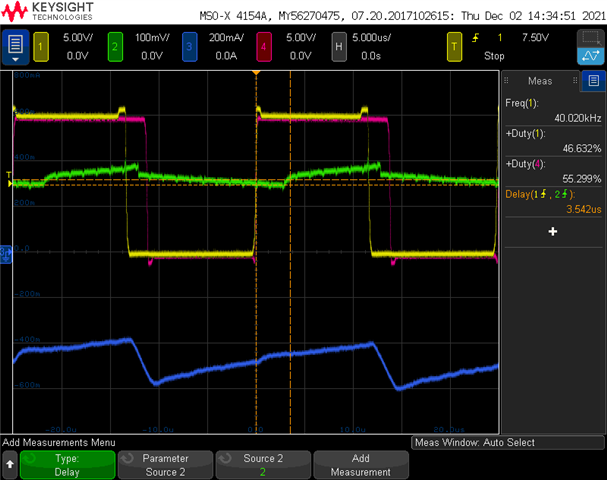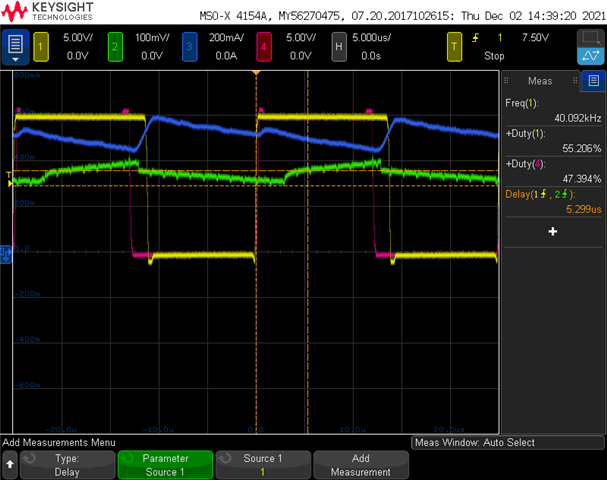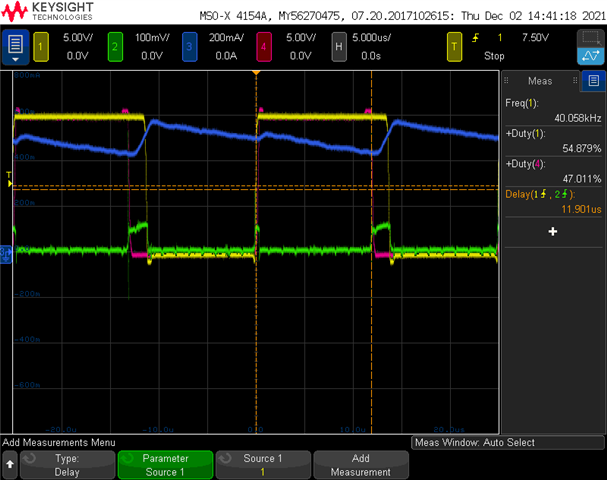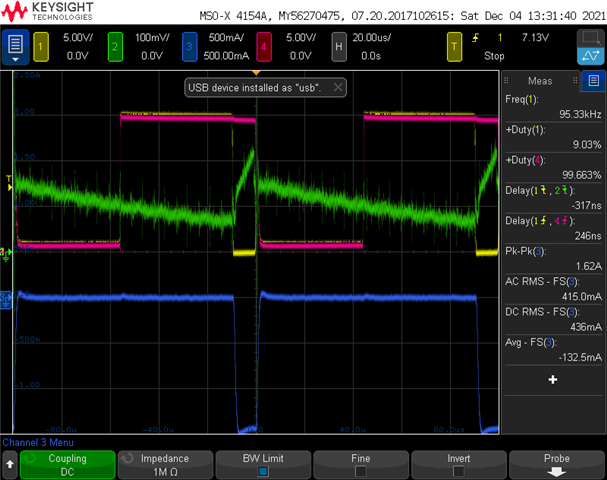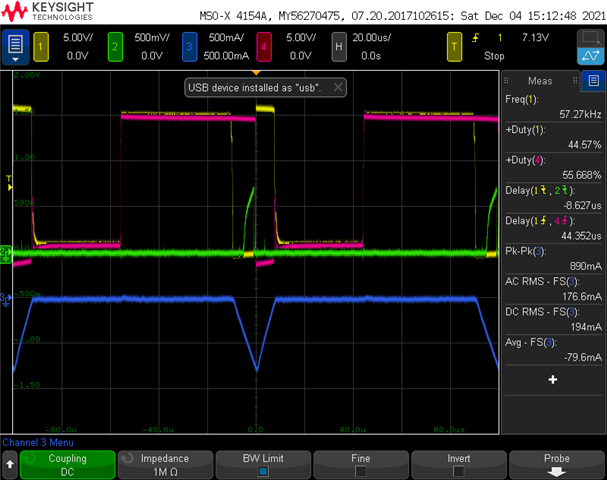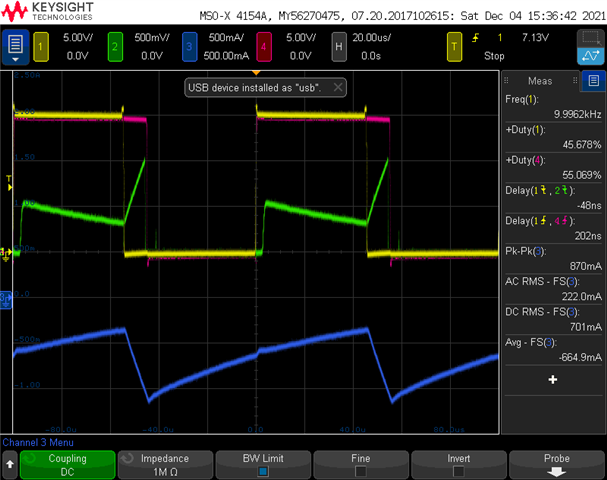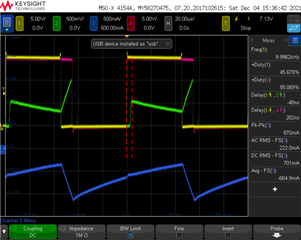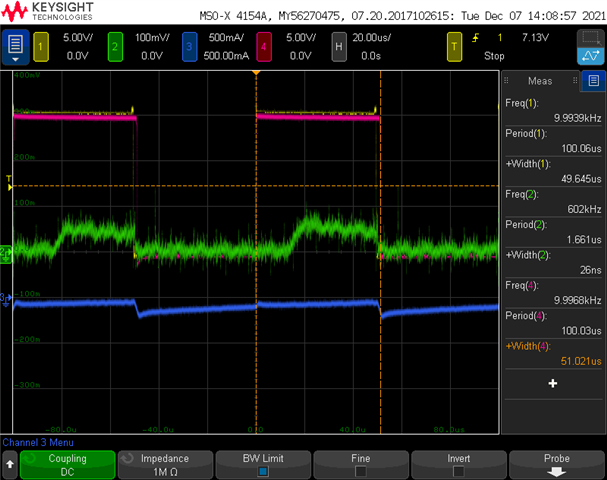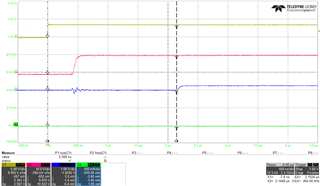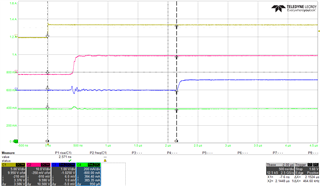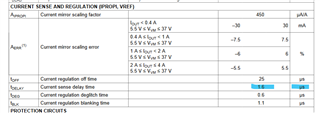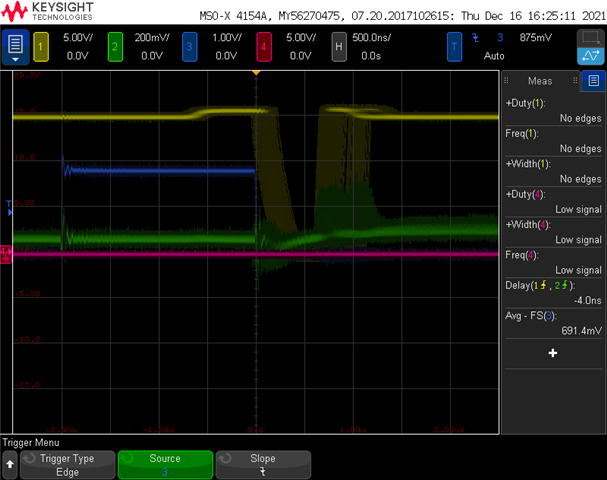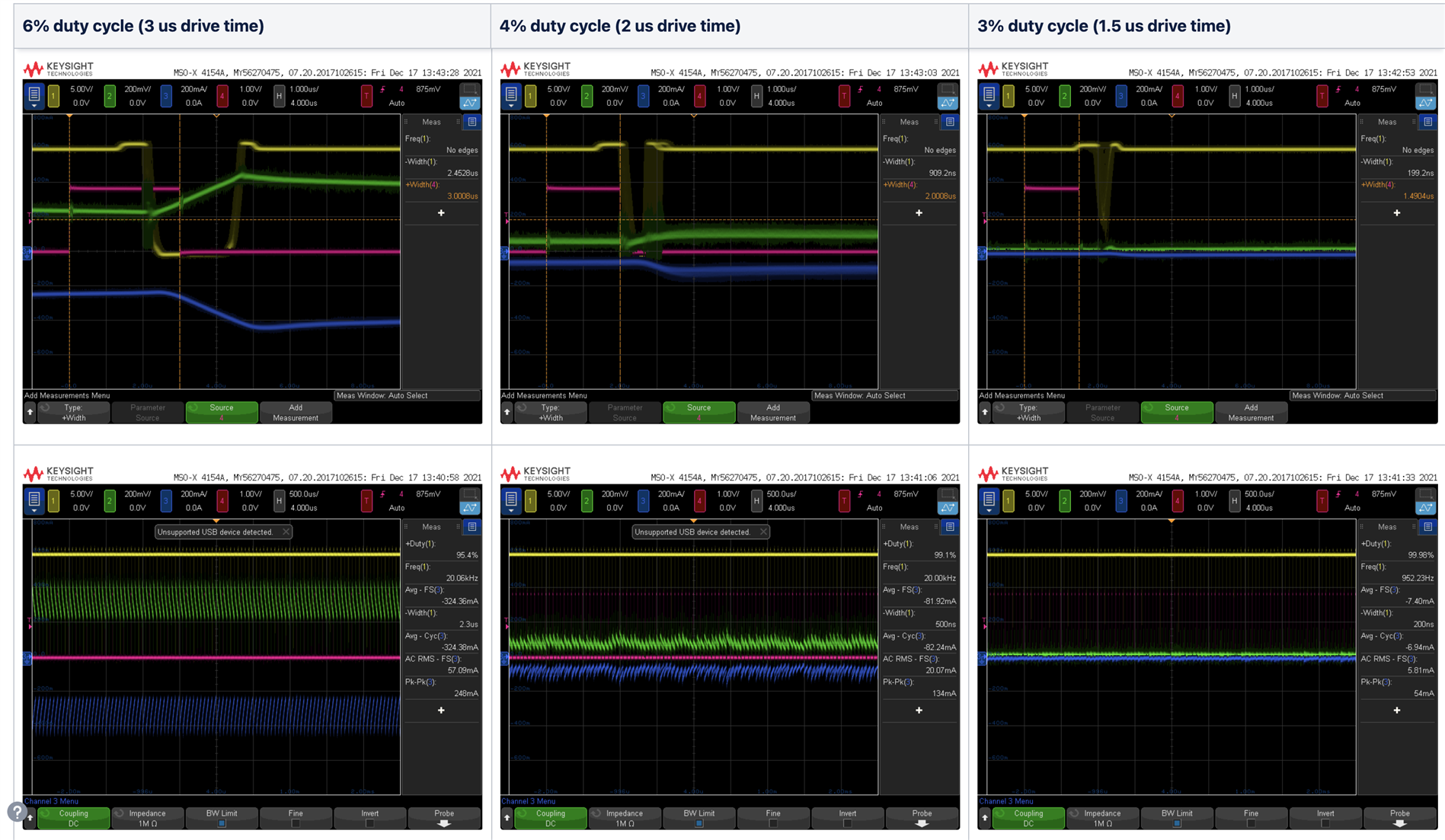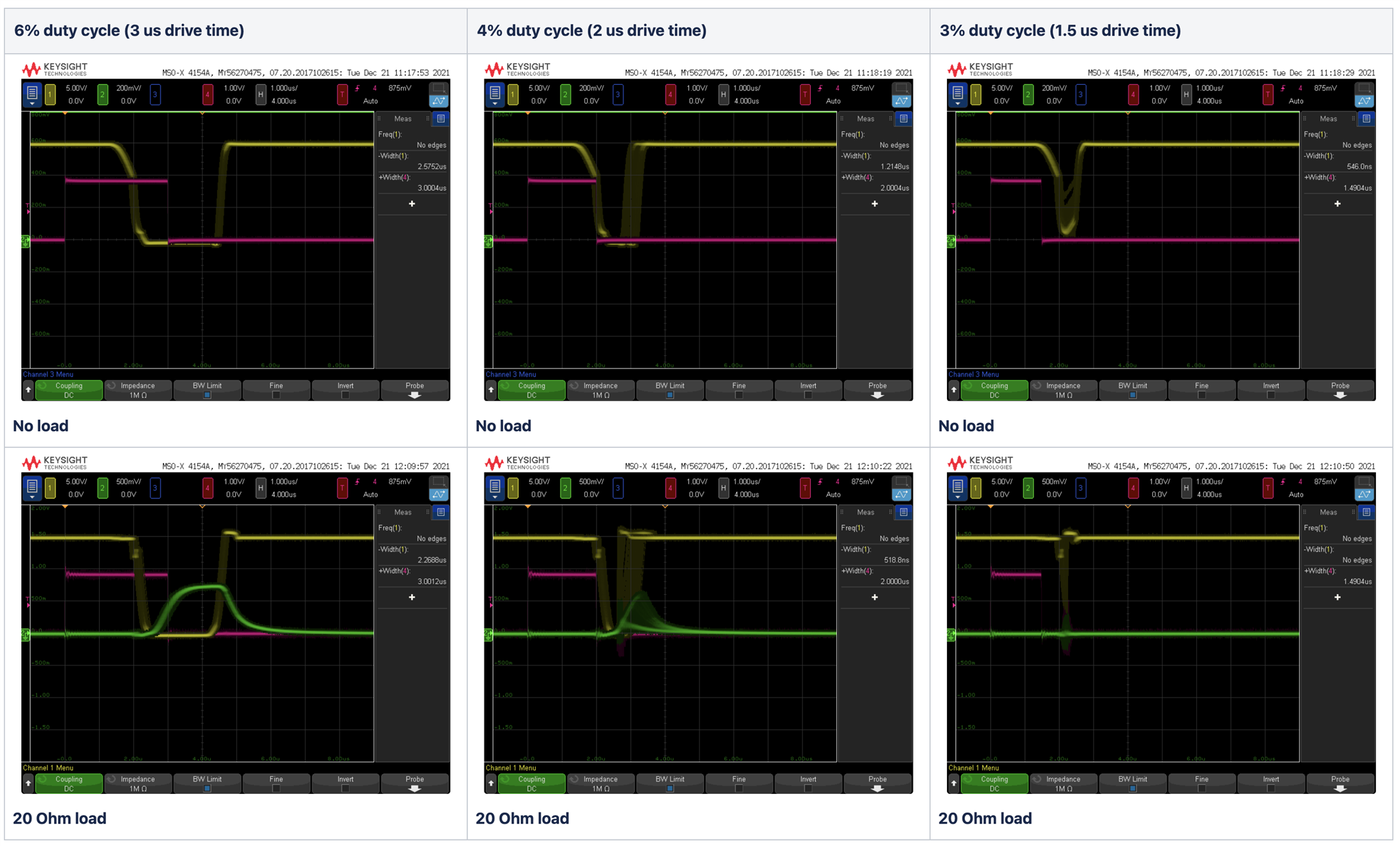Other Parts Discussed in Thread: DRV8874, DRV8874-Q1, INA181,
Hi Team,
My customer is bringing up the DRV8873 chip and has a few questions about the current sense.
1) For current sense Rs resistor, we have 1.1kOhm. So this cancels out the current mirror factor of 1/1100, and the voltage measured at Rs is the motor current. However, the voltage measured at Rs is about half (not exactly half) of the motor current measured using a current probe. Am I missing a factor somewhere? We are measuring the current at the rising edge of both PWMs.
2) How long does it take for the current sense output to decay to zero after the PWM goes low? I'm seeing that even after the HS switch is turned off (PWM=0), the corresponding current sense output is not zero (still decaying very slowly, after a few microseconds).
Slew rate we have set to the highest.
Disabled open load protection.
Disabled current regulator/TRIP.
We are in independent PWM mode.
Thanks,
Mitchell



